Magnetic Force - Definition, Facts, Example, Quiz, FAQ, Trivia
Discover the invisible push and pull forces that magnets create!
Magnetic Force Definition
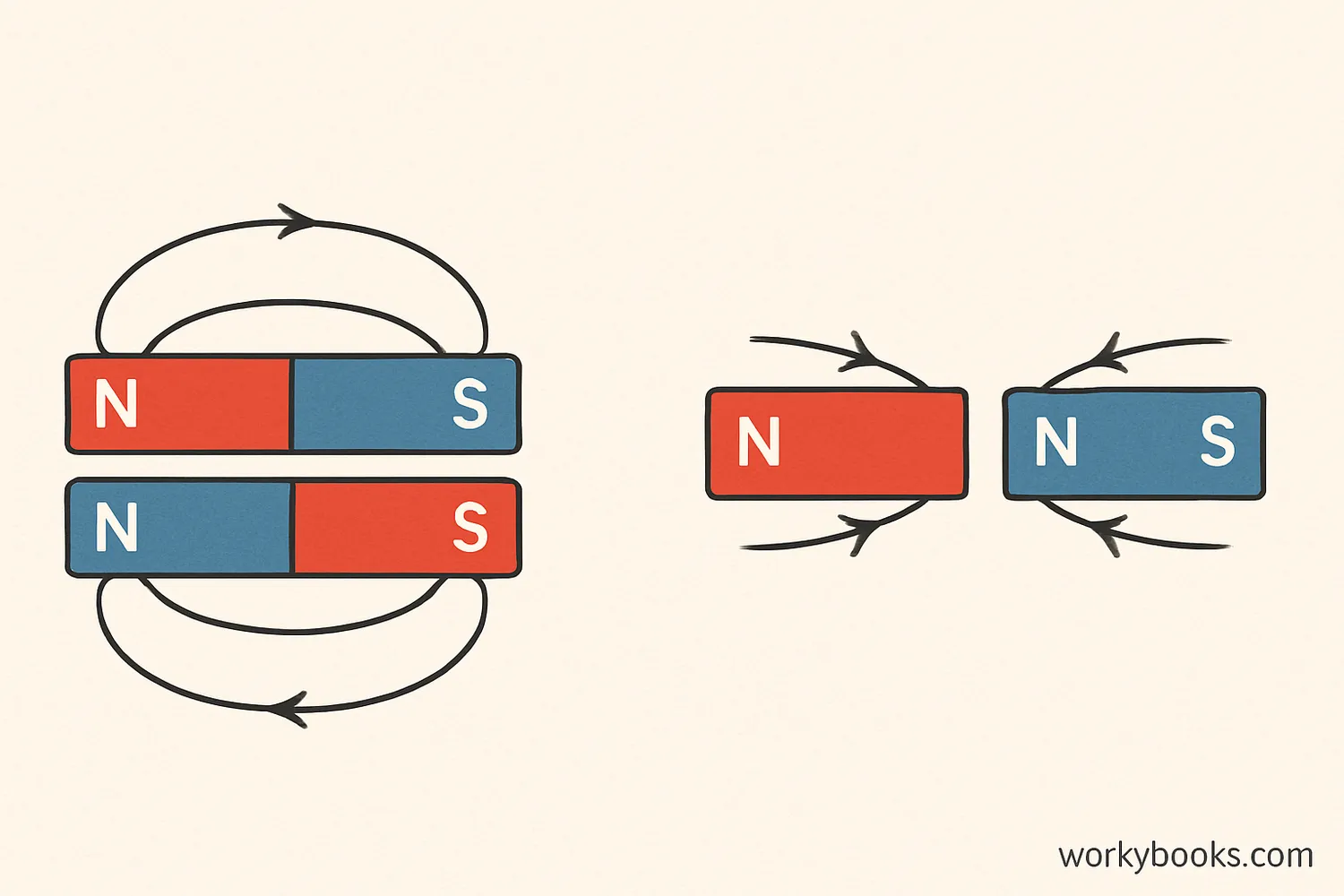
Magnetic force is the push or pull that magnets exert on each other and on certain materials. It's what makes magnets stick to your refrigerator or push away from each other when you try to force the same ends together.
Magnetic force is created by moving electric charges. When electrons move through a wire or spin around an atom's nucleus, they create tiny magnetic fields. In magnetic materials, many of these tiny fields align to create a noticeable magnetic force.
Science Fact!
Magnetic force is one of the four fundamental forces of nature, along with gravity, electromagnetic force, and nuclear forces. It's responsible for everything from holding magnets on your fridge to guiding migrating birds!
Attraction & Repulsion
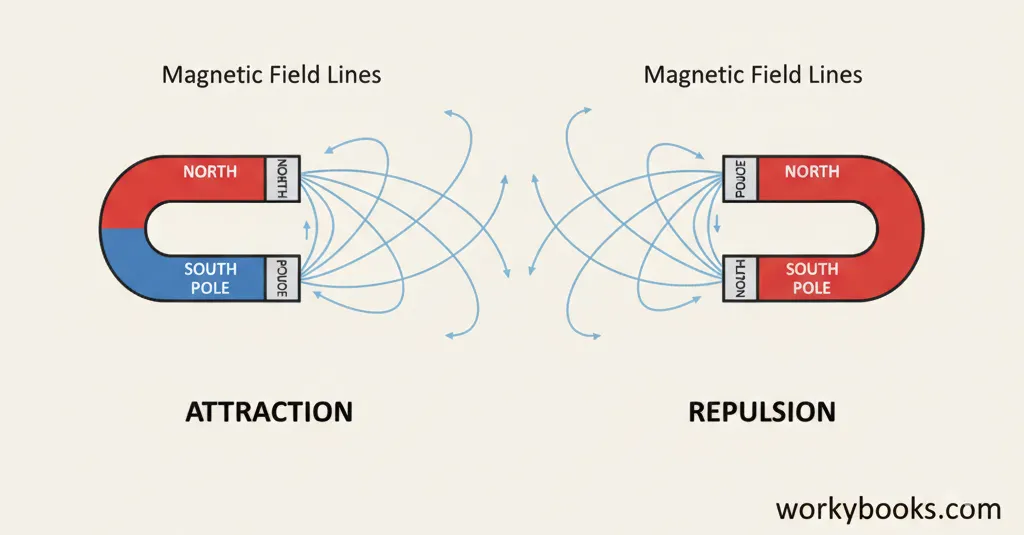
One of the most interesting things about magnetic force is that it can both attract and repel. This happens because every magnet has two poles: a north pole and a south pole.
The rule is simple: opposite poles attract, and like poles repel. This means north and south poles pull toward each other, while north-north or south-south combinations push away from each other.
Opposite Poles
North and south poles attract each other
Like Poles
North-north or south-south poles repel each other
Field Lines
Attraction happens when field lines connect between poles
No Monopoles
All magnets have both north and south poles
You can feel this force yourself by trying to push two magnets together. When the same poles face each other, you'll feel them pushing apart. When opposite poles face each other, they'll snap together.
Lorentz Force
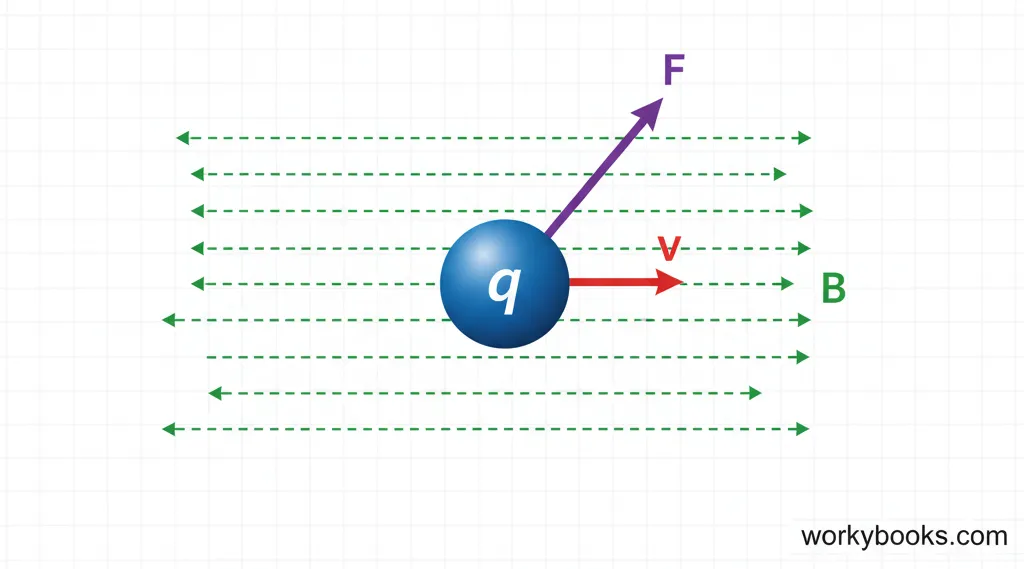
The Lorentz force is the force that a magnetic field exerts on a moving charged particle, like an electron or proton. This force is always perpendicular to both the direction the particle is moving and the direction of the magnetic field.
The Lorentz force explains why charged particles move in curved paths in magnetic fields. This is important in many technologies, from old-fashioned television tubes to modern particle accelerators.
Formula
The Lorentz force formula is F = q(v × B), where F is force, q is charge, v is velocity, and B is magnetic field strength.
Circular Motion
Because the force is always perpendicular to motion, charged particles move in circles or spirals in magnetic fields.
Real World Application
The Lorentz force is what causes the aurora borealis (northern lights). Charged particles from the Sun spiral along Earth's magnetic field lines and collide with atoms in the atmosphere, creating beautiful light displays.
Right-Hand Rule
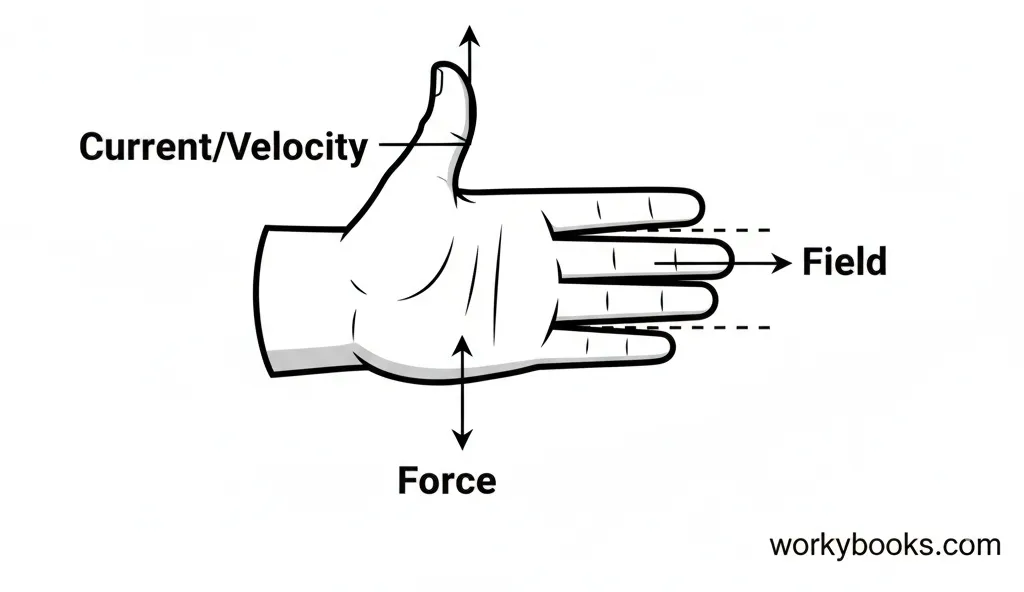
Scientists use a handy trick called the right-hand rule to figure out the direction of magnetic force. It helps predict which way a charged particle will curve when moving through a magnetic field.
Here's how it works: Point your fingers in the direction of the magnetic field (north to south). Point your thumb in the direction of positive current flow (or opposite to electron flow). Your palm will then face the direction of the force on a positive charge.
Remember
The right-hand rule works for positive charges. For negative charges like electrons, the force is in the opposite direction.
Practice
Try using the right-hand rule with a simple electromagnet. Predict the direction of force, then test your prediction!
The right-hand rule might seem tricky at first, but with practice, it becomes a powerful tool for understanding how magnetic forces work on moving charges.
Magnetic Force Formula
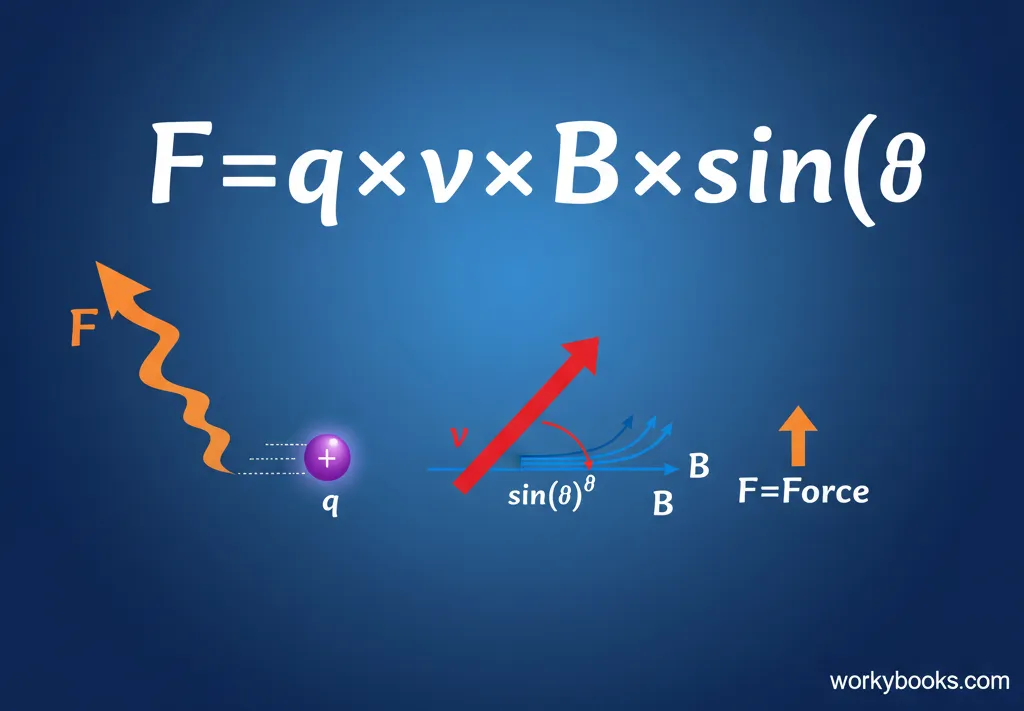
Scientists and engineers use mathematical formulas to calculate the strength of magnetic forces. The basic formula for the magnetic force on a moving charged particle is:
F = q × v × B × sin(θ)
Where:
• F is the magnetic force
• q is the electric charge
• v is the velocity of the charge
• B is the magnetic field strength
• θ is the angle between the velocity and magnetic field
Maximum Force
When a charged particle moves perpendicular to the magnetic field (θ = 90°), sin(90°) = 1, so the force is at its maximum: F = q × v × B.
Zero Force
When a charged particle moves parallel to the magnetic field (θ = 0°), sin(0°) = 0, so the magnetic force is zero.
Units of Measurement
Force (F) is measured in newtons (N), charge (q) in coulombs (C), velocity (v) in meters/second (m/s), and magnetic field (B) in teslas (T).
Force on Current-Carrying Wire
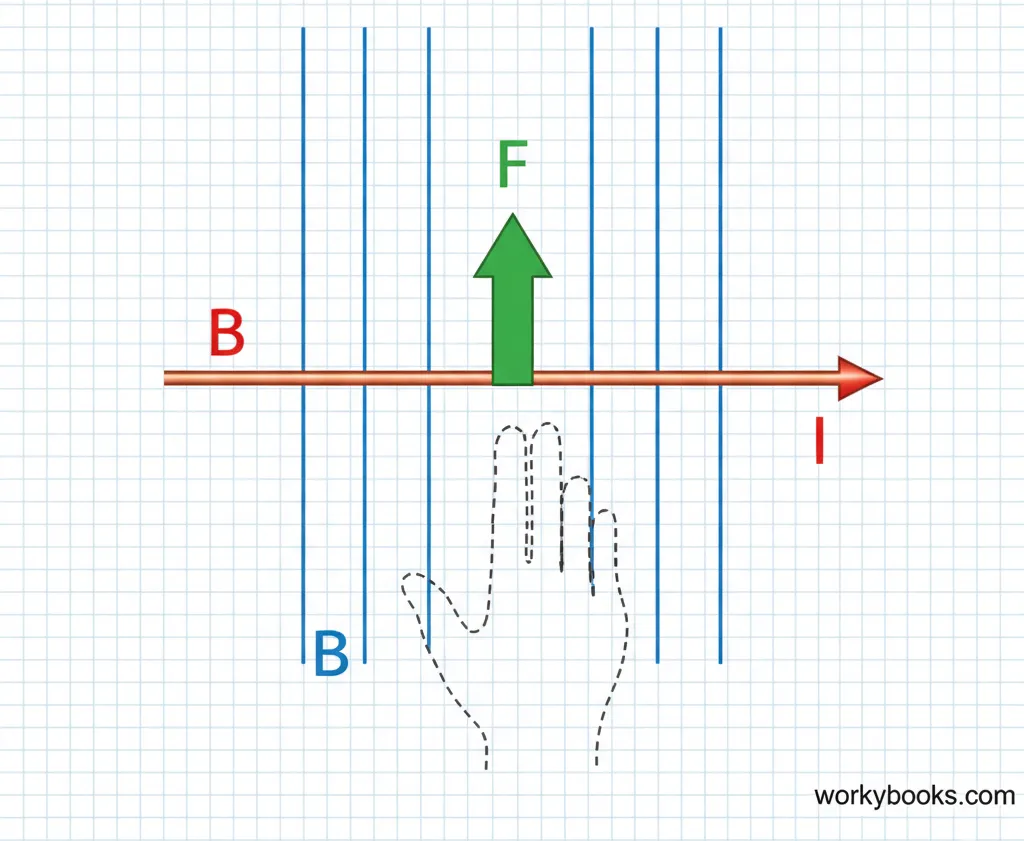
When an electric current flows through a wire in a magnetic field, the wire experiences a force. This happens because the moving electrons in the current each experience a tiny Lorentz force, and all these tiny forces add up to push the whole wire.
This principle is what makes electric motors work. The force on the current-carrying wire makes it move, which can then turn wheels, fans, or other mechanical parts.
Current Flow
Electrons move through the wire creating current
Magnetic Field
An external magnetic field surrounds the wire
Force on Electrons
Each moving electron experiences a Lorentz force
Wire Movement
The combined force on all electrons moves the wire
The formula for the force on a straight current-carrying wire is F = I × L × B × sin(θ), where I is current, L is wire length, B is magnetic field strength, and θ is the angle between the wire and magnetic field.
Magnetic Force Quiz
Test your understanding of magnetic force with this quiz! Answer all 5 questions to see how much you've learned.
Frequently Asked Questions
Here are answers to some common questions about magnetic force:
Science Trivia
Discover some amazing facts about magnetic force!
Animal Navigation
Some animals, like birds, turtles, and even bacteria, can sense Earth's magnetic field and use it for navigation. Scientists believe they have special cells containing magnetic minerals that act like tiny compass needles.
Medical Marvel
MRI machines use extremely powerful magnetic fields (up to 3 tesla) to create detailed images of the inside of the human body. These magnets are so strong that they can pull metal objects across the room!
Cosmic Magnets
Neutron stars have the strongest magnetic fields in the universe—up to 100 million tesla. That's strong enough to distort the atoms in your body from thousands of kilometers away! Earth's field is only about 0.00005 tesla in comparison.
Floating Trains
Maglev (magnetic levitation) trains use powerful electromagnets to float above the track, eliminating friction. This allows them to reach speeds over 600 km/h (370 mph)! The magnetic force is strong enough to lift the entire train.


